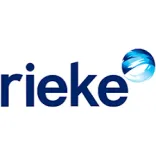Lipstick shear force resistance


Solution
- MultiTest motorised (plus digital force gauge) or software-controlled test stand
- Shaped compression probe or knife edge profile bend/shear anvil
- Special lower fixture for lipstick bullet testing
Benefits
- Range of physical tests on the same machine
- Optimise strength, resilience and texture for new formulations
Requirement
Lipstick holds the top spot in the hierarchy of makeup with its ability to completely transform appearance without the help of any other beauty product. One investigation by a beauty magazine concluded that the average consumer applies up to nine pounds of lipstick in their lifetime, so it’s no wonder that so much attention is focused on getting this little tube of oil / wax / colouring agent to perform consistently every time. The result not only needs to look good, with lasting results, but mustn’t bend, crack, crumble or break when applied.
The lipstick ‘bullet’ is formed by blending oils and waxes to create a moulded solid to which a colouring agent is added. Hard waxes give the stick its strength so that it doesn't snap away from the tube every time you use it, while softer waxes help to bind everything together and keep lips conditioned and well moisturised. From a cosmetic point of view the most important ingredient is the dye, pigment or other category of agent which achieves the desired colour; which may impact the physical performance.
It is therefore vital to control the formulation process to achieve a consistent texture that not only feels smooth on the lips but is resilient enough to withstand being applied firmly—irrespective of the shade chosen.
A key method to control the quality and consistency of lipstick is to measure its hardness by shear testing. This involves clamping the lipstick tube in a fixture and applying a cantilever force to push-down on the lipstick itself. The amount of force required to break it determines its hardness whilst how far the lipstick deflects indicates its brittleness. This data aids manufacturers to produce a lipstick which doesn’t snap out of its holder or crack when applied.
Solution
There are 3 distinct probe-types used to test lipsticks, all of which can be used with Mecmesin force testers:
- Hemisphere-type (to simulate the shape of a lip) and chisel-type for bend tests.
- ‘Cheese-wire’ to slice through the lipstick crayon.
- Needle probe to pierce through the top or side of the bullet.
Compressive force is applied to the lipstick at a constant speed by using a motorised tester. Force is measured by a loadcell and data is plotted on a graph, from which calculations are made to determine hardness, brittleness and stiffness.
The peak force indicates the hardness telling you just how much the lipstick can withstand before breaking—usually at the joint with the holder, breaking elsewhere would indicate quality issues with the homogeneity of the material structure.
The amount of deflection of the lipstick at break measures brittleness; with softer lipsticks deflecting further than harder ones. Stiffness is provided by calculating the gradient of the curve when the lipstick is being bent.
Monitoring these key characteristics during production allows manufacturers to identify defects in the process which may produce grainy or flaky lipsticks caused by the presence of unwanted air bubbles or incomplete colourant dispersion. A repeatable test procedure, quantifying the values for acceptable performance, also means in-house test standards can be created to benchmark new formulations. The R&D lab can then report pass/fail results for products created with alternative synthetic, natural, eco-friendly, vegan-approved ingredients that the market demands and those that a regulatory body such as the FDA or EMA demands.
Test equipment
- MultiTest or OmniTest motorised (plus digital force gauge) or software-controlled test stand
- Shaped compression probe or knife edge profile bend/shear anvil
- Custom Lipstick Bend Fixture for lipstick bullet testing














